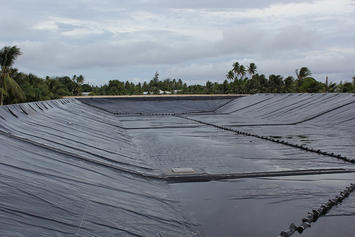
Today’s temperature map alerts us to another heat wave amid another drought across much of the U.S. These conditions guarantee continued battles over water availability and rights to use it. That, in turn, promises restrictions on usage in dry jurisdictions. For many, of course, it’s as down-home as those flow-control showers and toilets.
Water is a precious commodity that cannot be easily transported or created. Even the seemingly successful desalinization projects offer cautionary tales, and not just about their expense.
Where natural supply (precipitation) is not necessarily a problem, pollution can be. In some spots, such as eastern Long Island, NY, where I write from, that’s an issue not just for surface waters, but underground, for the aquifer that is our “sole source” for tap use. Fertilizers, phosphates, biological waste (crap) and even mulching of some plants and trees can cause trouble below and above the surface. (This isn’t new to Suffolk County, which actually outlawed most detergents in the 1970s.)
Commercial forces work to allocate consumer (usually bottled or filtered) drinking water. That’s a $35 billion global market, per Culligan International. Local water agencies also can use price mechanisms to adjust usage to meet scarcity, although regulation is often around the corner. In one of the latest edicts, lawns that serve as corporate or public cosmetic landscaping will be outlawed in the Las Vegas area. In most U.S. suburban areas, the scale of projected water and sewer needs of new residents figure in the planning-approval process for custom homes as well as tracts.
Big Agriculture—which is indirectly a reflection of human appetites—is a rougher candidate for what economists call equilibrium. So much of its irrigation supply is a function of politics and subsidies that it’s hard to sort out the priorities through a marketplace. Technology can help, such as satellite-targeted watering. Yet, other agenda enter the discussion, such as whether to indulge the cattlemen when vegetable proteins would be so much better for us. But even trees are a value judgment: Should California almond growers get emergency relief? The water footprint for nuts is nuts.
In fact, water is a proxy for sweeping human debates: The role of, and responsibility for, climate. The proper pecking order of species, down to the smallest migrating fish. The sanctity (or not) of development rights. The justifiability of continued population growth on the planet (even if the reproduction rate is already going negative).
As the hot summer looms in much of the northern hemisphere, water is going to be all the more on our minds. Arriving at its “best and highest” use is an economic problem, and probably a moral one. Mankind will have to sweat it.
This piece first appeared at: timwferguson.com
Tim W. Ferguson, the former editor of Forbes’s Asia edition, writes about business, economics and society.
Photo: United Nations Development Programme via Flickr under CC 2.0 License.












